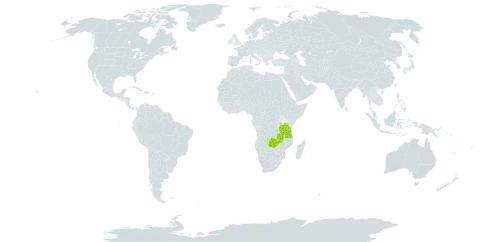Leaflets 3, paler beneath, often silvery, 1.6–11.5 × 0.3–1.7 cm, narrowly elliptic to linear-lanceolate, acute to rounded but mucronulate at the apex, cuneate or shortly rounded at the base, pubescent above and on the main nerves and midrib beneath, but rest of leaflet surface beneath glabrescent but glandular with the small veins appearing dark, main venation deeply impressed above, prominent beneath, the leaflet surface appearing rugose, the 4 basal nerves extending to halfway along the blade or almost to the apex; petioles 2–6 mm long; rhachis 2–11 mm long; petiolules 1.5 mm long; stipules 0.8–2 cm × 2 mm, oblong-lanceolate to linear, pubescent, veined.
Standard brownish, pinkish or yellow with brown veins outside, yellow or cream-coloured inside, 6.5–11 × 4–8 mm, obovate-oblong, often emarginate, with appressed often ferruginous bristly pubescence in middle area outside particularly towards the claw; wings and keel yellow or cream, often with a dark apex.
Racemes axillary, the flowering part 2–5 × 1.7–2.3 cm; peduncle 4–11 cm long, covered with long and short hairs; pedicels 1–2 mm long, strongly deflexed; bracts subpersistent, 4–8 × c. 1 mm, lanceolate, pubescent.
Calyx covered with ± appressed ferruginous or blackish bristly pubescence, 3.5–7 mm long; teeth triangular, equalling or shorter than the tube.
Erect pyrophytic herb, with several usually unbranched or sparsely branched stems (7)15–50(100) cm tall from a woody rootstock.
Stems of few to many internodes, often very leafy, covered with long and short hairs.
Pods 11 × 6–8 mm, oblong, covered with long hairs, short hairs and glands.
An erect herb. It grows 15-35 cm tall.
Seeds not seen.
